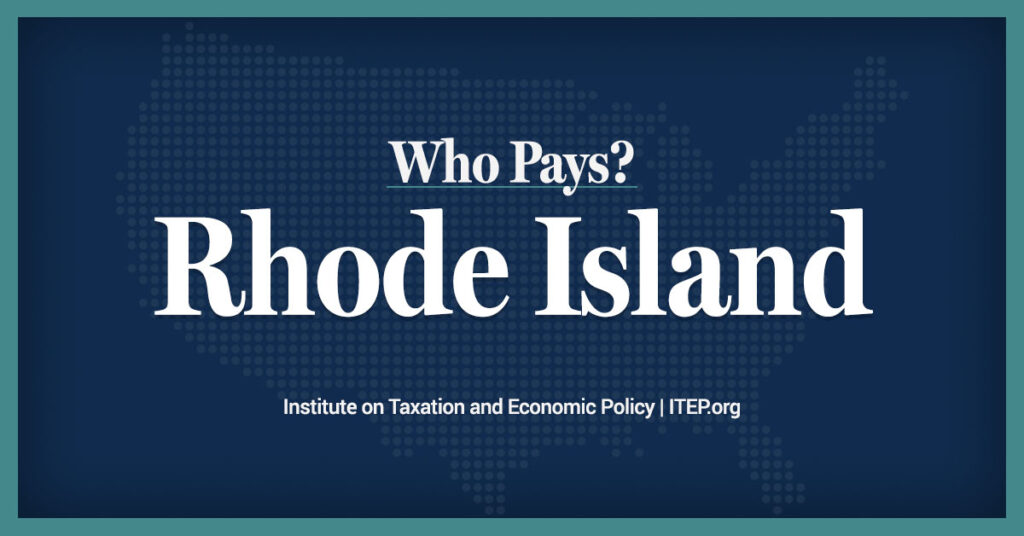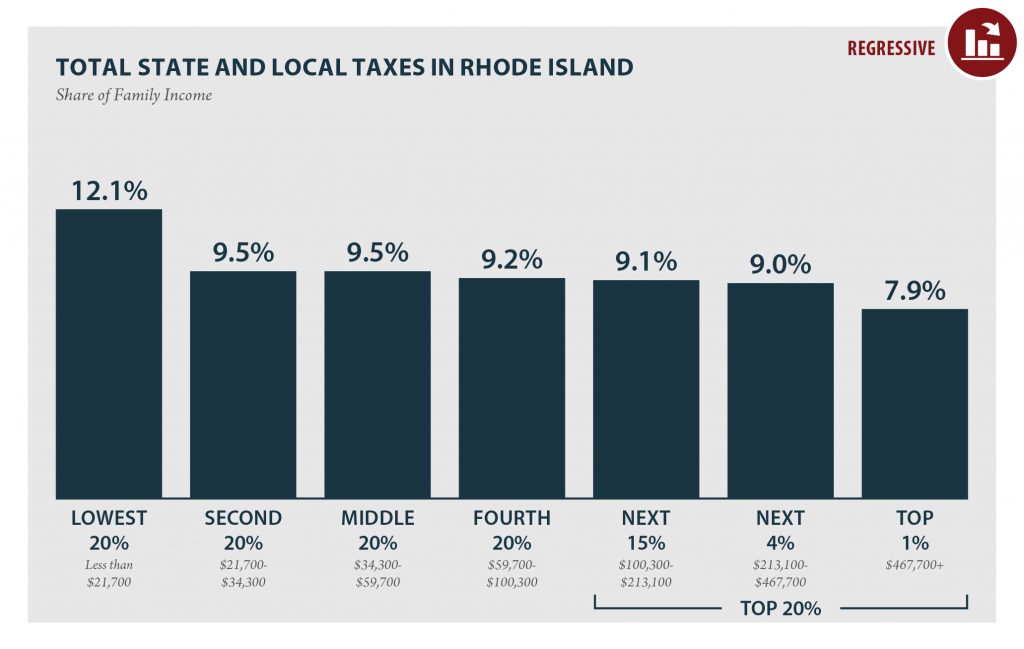January 30th, 2013 at 12:01 am by Ted Nesi under Nesi’s Notes, On the Main Site
The Institute on Taxation and Economic Policy is out with its latest look at how much of their incomes different Rhode Islanders pay in state and local taxes, and the big headline hasn’t changed: the state’s tax structure takes almost twice as much from the poorest 20% of residents as it does from the top 1%.
Rhode Island families making less than $18,000 a year will pay 12.1% of their 2010 income in state and local taxes under current law, according to the study by ITEP, a Washington-based research group that is affiliated with the labor-backed nonprofit Citizens for Tax Justice.
At the other end of the spectrum, Rhode Island families making $378,000 or more a year will pay 6.4% of their 2010 income in state and local taxes when the federal deduction for those taxes is taken into account. An analysis by WPRI.com of ITEP’s reports shows that since 2002, state and local taxes have gone up or stayed steady for the top 60% of taxpayers while decreasing slightly for the bottom 40%:
(The 2010 income for the lowest 20% was less than $16,000; for second 20%, $16,000-$27,000; for middle 20%, $27,000-$42,000; for fourth 20%, $42,000-$72,000; for the next 15%, $72,000-$141,000; for the next 4%, $141,000-$328,000; and for the top 1%, $328,000 or more.)
Rhode Island is among 10 states that levy the highest taxes on the poor and is the only New England state in that group, according to the study. It is also one of only three states in the U.S. where the Earned Income Tax Credit isn’t fully refundable, which means Rhode Island families with no income tax liability cannot receive the benefit of the credit, the study says.
However, the study praised Rhode Island for some changes its made to its tax code in recent years: eliminating all federal itemized tax deductions; phasing out the benefit of its standard tax deduction and personal exemption for wealthier residents; increasing both the standard deduction and personal exemption; and taking “small steps” toward expanding its sales tax base to cover more services and exempt goods.
The three major types of taxes levied on households by state and local government in Rhode Island – sales and excise taxes, personal income taxes, and property taxes – hit different residents at different rates, with sales taxes taking a particularly large chunk of poorer residents’ incomes and the income tax hitting wealthier residents hardest:
Like most states in the region, Rhode Island continues to be heavily dependent on the property tax, which provided 32% of all state and local tax revenue in fiscal 2010 compared with 30% in fiscal 2000. On the other hand, the study says Rhode Island still taxes far fewer services than most states:
Of course, the ITEP study isn’t a full picture of what families pay in taxes: it doesn’t look at federal income and payroll taxes, the former of which is progressive and would increase the bill for wealthier Rhode Islanders. But it’s an interesting look at how the state- and local-level tax regime burdens different people.





